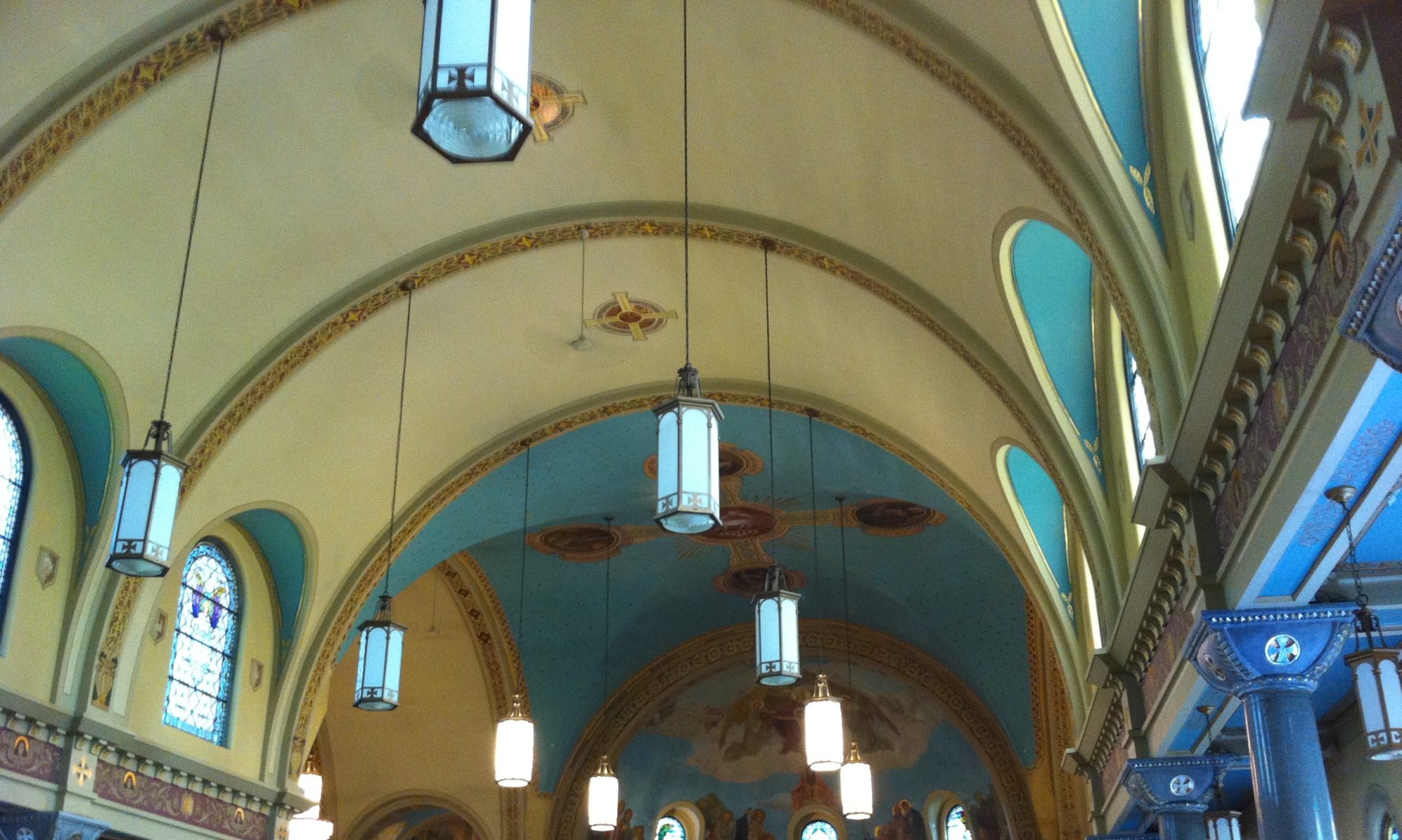Date:2/10/13
Church name/type: Saint Vincent De Paul (Roman Catholic)
Format type: Catholic mass, the usual formula
Overall Impression: Seems ok
Thoughts:
So it’s not the first time I’ve visited Vincent De Paul. I used to go occasionally when it was down the street in my college days. I liked the church and the priest (who is still there), so I was stumped as to why I never made this my home church. This week I remembered; Vincent De Paul is mainly families with kids. As such it exudes a friendly vibe, but it’s extremely kid-focused. They even mentioned Catholic Youth Conference, which is a thing I didn’t even know existed! Its great that a church has such involved youth, but it did make me feel like I have nothing to say to other adults unless I have some kids to talk about. Seems like this sort of thing appeals to a lot of folks since the church was packed.
I will duly make note of the things that contribute to the draw of Vincent De Paul.
1) The church has moveable seats which may be rearranged or removed if the room needs to be repurposed.
2) No kneelers!
3) The space is clean, bright and warm, and looks new (which probably means it’s painted and cleaned regularly).
4) The musical instrumentation varies with each song. I heard: guitar, trumpet, drums, organ, flute, and harmonica.
5) There are greeters at the entry doors AND ushers to seat more people as mass progresses. This one is actually a double whammy because it also points to the fact that those coming in late are welcomed inside.
6) There is a sign language translator at this church. Not only are the unchanging parts of mass translated, but the homily (sermon) as well.
7) Father Chris DeGiovine. I met him first through Saint Rose. He holds a position there called “Dean of Spiritual Life”, and hangs out in the interfaith center. I find him engaging and friendly, and I know that many others do too. Since he works for the campus, he’s probably not going anywhere- also a big draw for Catholics. Priests get moved around so often with no warning.
That sums up the best parts. I have just a couple negatives to mention. Father Chris’s sermons are great but I often feel like they stop short just when they are about to get good. I crave something in depth and they usually hover just above the level I’m hoping for. I guess thats not much of a complaint. Second thing is, when did they replace round hosts with kibble? Because that’s totally what it looked like when I went for communion. It was cracker-ish and tasted boring, but was dense and shaped like a square puffy pillow. Again I guess that’s a lame complaint at best, but it was definitely a surprise.
Compare? I’d take this place over the Cathedral any day, but overall I’m finding the lack of personal interaction in Catholic Churches the biggest turnoff. Sure I spoke with Father Chris and my one friend I already knew. But no one else spoke to me. Based on the friendly vibe there’s a possibility that this had to do with size and its corresponding new-face-recognition problem. But Roman Catholics are showing themselves rather reserved in most of my experiences, so I’ve come to expect the low interaction.
